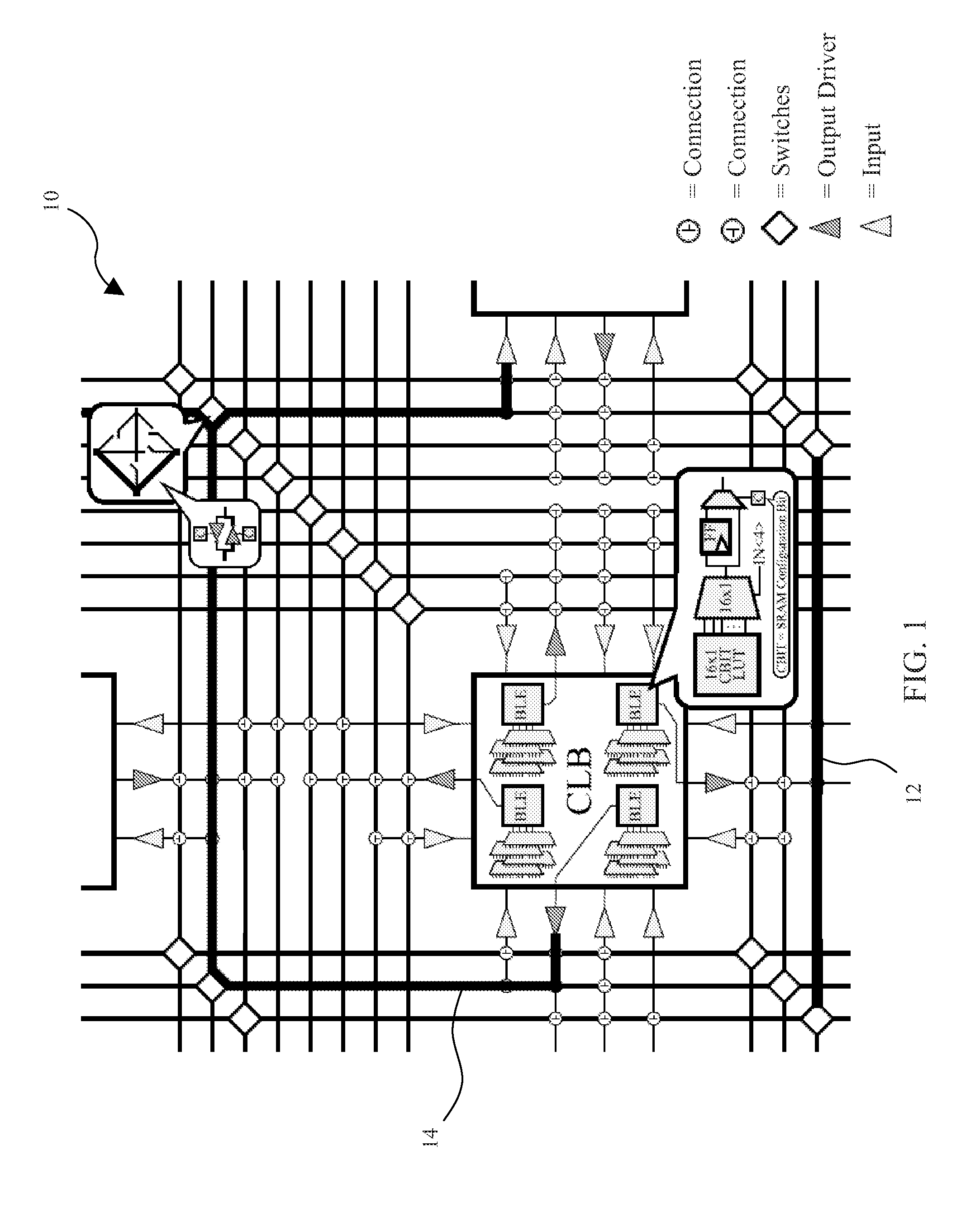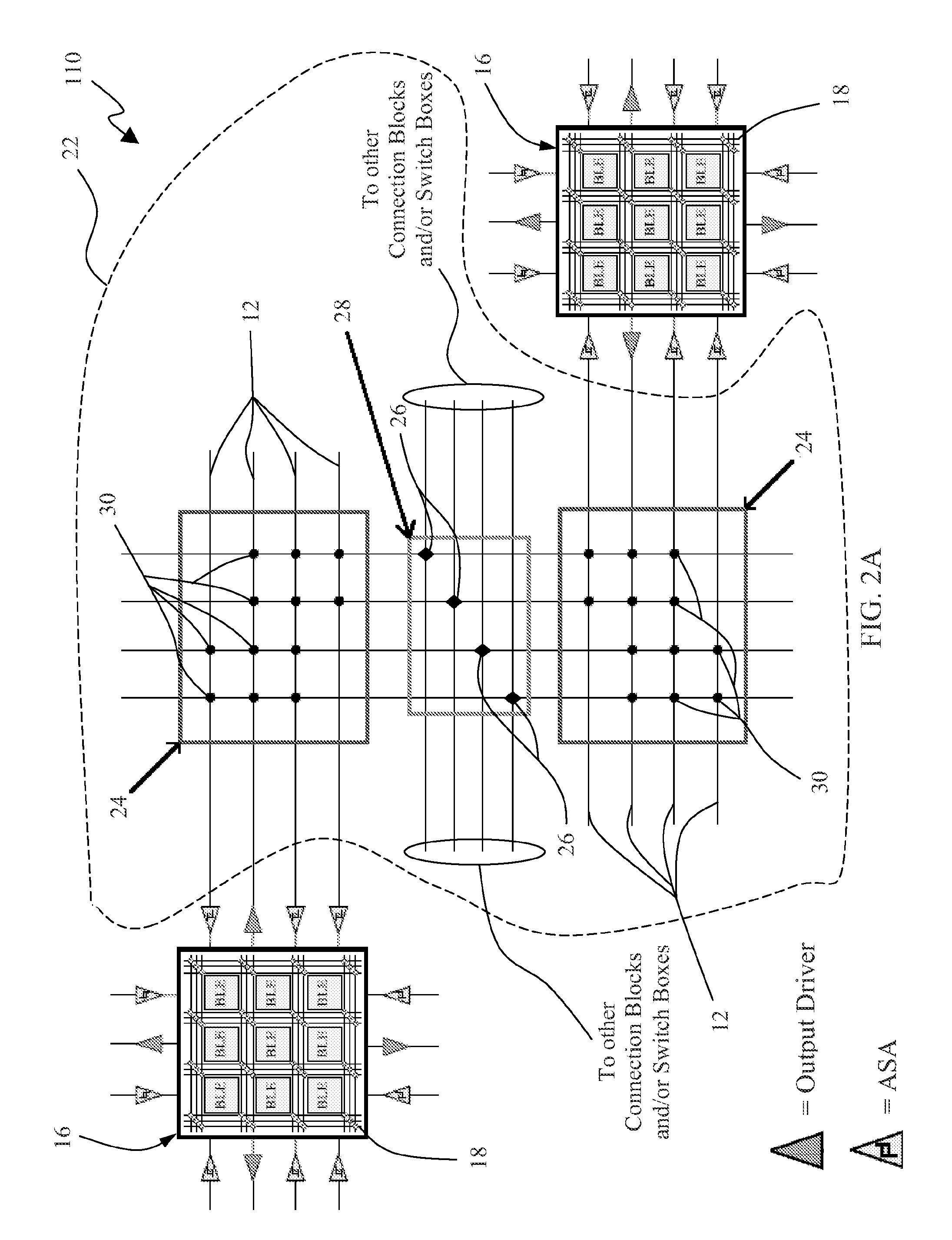Sub-threshold FPGA and related circuits and methods thereof
a technology of sub-threshold and related circuits, applied in the field of sub-threshold fpga, can solve the problems of high design complexity, low energy efficiency, and high cost of developing these applications, and achieve the effects of reducing fpga area, low energy overhead, and optimizing routing delay
- Summary
- Abstract
- Description
- Claims
- Application Information
AI Technical Summary
Benefits of technology
Problems solved by technology
Method used
Image
Examples
example 1
[0050 includes field programmable gate array (FPGA), wherein the FPGA is configured to operate in a sub-threshold voltage range.
[0051]Example 2 may optionally include at least in part the FPGA of example 1, wherein the FPGA may further comprise:
[0052]a plurality of configurable logic blocks (CLBs) for performing combinational and / or sequential logic operations based on programming of the FPGA in response to one or more logic inputs;
[0053]a plurality of programmable routing channels configured for interconnecting the CLBs for routing input signals to the CLBs and output signals from the CLBs based on programming of the FPGA; and
[0054]a plurality of memory cells within the FPGA for configuring logic block operation and signal routing of the programmable routing channels;
[0055]wherein the programmable routing channels comprise:[0056]wire segments surrounding the CLBs;[0057]connection blocks configured for connecting input and output signals of the CLBs with the wire segments;[0058]a pl...
example 43
[0111 may optionally include a method for programming the FPGA of examples 1 or 2 (as well as subject matter of one or more of any combination of examples 1-42).
[0112]Example 44 may optionally include at least in part the method of example 43 (as well as subject matter of one or more of any combination of examples 1-42), wherein the method of programming comprises:
[0113]transforming Verilog or other source code into BLIF;
[0114]performing a placing and routing operation using VPR or a similar tool on the BLIF and architecture components to create a structure;
[0115]analyzing the structure;
[0116]performing timing and energy calculations;
[0117]re-analyzing low-swing and variation aspects of the structure; and
[0118]converting the structure into programming data.
[0119]Example 45 may optionally include at least in part the method of method of example 44 (as well as subject matter of one or more of any combination of examples 1-43), further comprising:
[0120]mapping the output of VPR to a ph...
PUM
 Login to View More
Login to View More Abstract
Description
Claims
Application Information
 Login to View More
Login to View More - R&D
- Intellectual Property
- Life Sciences
- Materials
- Tech Scout
- Unparalleled Data Quality
- Higher Quality Content
- 60% Fewer Hallucinations
Browse by: Latest US Patents, China's latest patents, Technical Efficacy Thesaurus, Application Domain, Technology Topic, Popular Technical Reports.
© 2025 PatSnap. All rights reserved.Legal|Privacy policy|Modern Slavery Act Transparency Statement|Sitemap|About US| Contact US: help@patsnap.com



